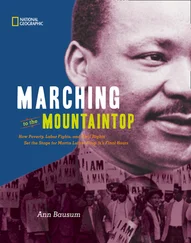Hampton Sides - Hellhound on His Trail - The Stalking of Martin Luther King, Jr. And the International Hunt for His Assassin
Здесь есть возможность читать онлайн «Hampton Sides - Hellhound on His Trail - The Stalking of Martin Luther King, Jr. And the International Hunt for His Assassin» весь текст электронной книги совершенно бесплатно (целиком полную версию без сокращений). В некоторых случаях можно слушать аудио, скачать через торрент в формате fb2 и присутствует краткое содержание. Жанр: Старинная литература, на английском языке. Описание произведения, (предисловие) а так же отзывы посетителей доступны на портале библиотеки ЛибКат.
- Название:Hellhound on His Trail: The Stalking of Martin Luther King, Jr. And the International Hunt for His Assassin
- Автор:
- Жанр:
- Год:неизвестен
- ISBN:нет данных
- Рейтинг книги:4 / 5. Голосов: 1
-
Избранное:Добавить в избранное
- Отзывы:
-
Ваша оценка:
Hellhound on His Trail: The Stalking of Martin Luther King, Jr. And the International Hunt for His Assassin: краткое содержание, описание и аннотация
Предлагаем к чтению аннотацию, описание, краткое содержание или предисловие (зависит от того, что написал сам автор книги «Hellhound on His Trail: The Stalking of Martin Luther King, Jr. And the International Hunt for His Assassin»). Если вы не нашли необходимую информацию о книге — напишите в комментариях, мы постараемся отыскать её.
,
,
,
,
,
Edgar Award Nominee
One of the Best Books of the Year:
From the acclaimed bestselling author of
and
, a taut, intense narrative about the assassination of Martin Luther King, Jr., and the largest manhunt in American history. On April 23, 1967, Prisoner #416J, an inmate at the notorious Missouri State Penitentiary, escaped in a breadbox. Fashioning himself Eric Galt, this nondescript thief and con man—whose real name was James Earl Ray—drifted through the South, into Mexico, and then Los Angeles, where he was galvanized by George Wallace’s racist presidential campaign. On February 1, 1968, two Memphis garbage men were crushed to death in their hydraulic truck, provoking the exclusively African American workforce to go on strike. Hoping to resuscitate his faltering crusade, King joined the sanitation workers’ cause, but their march down Beale Street, the historic avenue of the blues, turned violent. Humiliated, King fatefully vowed to return to Memphis in April. With relentless storytelling drive, Sides follows Galt and King as they crisscross the country, one stalking the other, until the crushing moment at the Lorraine Motel when the drifter catches up with his prey. Against the backdrop of the resulting nationwide riots and the pathos of King’s funeral, Sides gives us a riveting cross-cut narrative of the assassin’s flight and the sixty-five-day search that led investigators to Canada, Portugal, and England—a massive manhunt ironically led by Hoover’s FBI. Magnificent in scope, drawing on a wealth of previously unpublished material, this nonfiction thriller illuminates one of the darkest hours in American life—an example of how history is so often a matter of the petty bringing down the great. Amazon.com Review Amazon Best Books of the Month, April 2010
Hellhound on His Trail
Hellhound on His Trail
--Lynette Mong David Grann Reviews *Hellhound on His Trail
David Grann is most recently the author of
as well as the #1
bestseller
. Read his review of
:
Hampton Sides has long been one of the great narrative nonfiction writers of our time, excavating essential pieces of American history--from the daring rescue of POWs during World War II to the settling of the West--and bringing them vividly to life. Now in his new book,
, he applies his enormous gifts to one of the most important and heart-wrenching chapters in U.S. history: the stalking and assassination of Martin Luther King, Jr., by James Earl Ray. The book chronicles the terrifying collision of these two figures. In 1967, King was struggling to complete his monumental Civil Rights crusade and to maintain, amid the rise of more militant factions, the movement’s nonviolent nobility. While King increasingly intuits his own death, Ray has begun to track him down. Through Sides’ prodigious research, Ray emerges as one of the eeriest characters, a prison escapee and racist who wears alligator shoes and is constantly transforming himself, changing names and physical appearances. He is determined to become somebody, to insert himself into the national consciousness, through a single unthinkable act of violence. Sides illuminates not only the forces that culminated in King’s assassination; he also reveals the largely forgotten story of how his death led to the largest manhunt in American history. Almost unfathomably, it is J. Edgar Hoover, the person who had long hoped for King’s destruction and had even spied on him, who ultimately brings King’s killer to justice. Hellhound on His Trail












